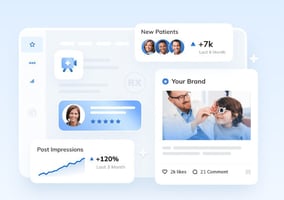In today's digital age, creating a mobile app is crucial for businesses to reach their audience...
Mobile App Development Cost Calculator: A Comprehensive Guide
In today’s digital age, mobile apps have become essential tools for businesses, offering opportunities for growth, customer engagement, and revenue generation. However, the journey of developing a mobile app can be complex and expensive, leading many entrepreneurs and businesses to seek a mobile app development cost calculator. This article delves into the concept of a mobile app development cost calculator, how it works, the factors affecting app development costs, and tips for using such calculators effectively.
Understanding Mobile App Development Cost Calculators
A mobile app development cost calculator is an online tool designed to estimate the potential costs associated with developing a mobile application. It takes into account various factors such as the app's complexity, the platform (iOS, Android, or both), design requirements, features, and development time. By providing these inputs, users can receive an estimated budget range for their project, allowing for better financial planning and decision-making.
Why Use a Cost Calculator?
-
Budgeting: A cost calculator helps businesses create a budget for their app development project, ensuring they allocate sufficient funds to cover all aspects of the development process.
-
Transparency: It promotes transparency by breaking down costs into categories (design, development, testing, etc.), making it easier to understand where the budget is going.
-
Comparison: By estimating costs for different features and functionalities, businesses can prioritize their needs and compare various development options.
-
Informed Decision-Making: A calculator provides valuable insights, enabling stakeholders to make informed decisions about which features to include or omit based on budget constraints.
Key Factors Influencing Mobile App Development Costs
Several factors play a crucial role in determining the overall cost of mobile app development. Understanding these factors can help users input accurate data into the cost calculator for a more precise estimate.
1. App Type
The type of app you want to develop significantly impacts the cost. There are generally three types of mobile apps:
-
Native Apps: These are platform-specific applications (iOS or Android) built using platform-specific programming languages. They tend to be more expensive due to the need for separate codebases.
-
Hybrid Apps: These apps are built using web technologies and wrapped in a native shell, allowing them to run on multiple platforms. They typically cost less than native apps.
-
Web Apps: These are mobile-optimized websites that function similarly to mobile apps. They are usually the most cost-effective option but may lack some native functionalities.
2. Features and Functionality
The complexity of the app, including the features and functionalities it includes, directly affects development costs. Common features that can drive costs up include:
- User authentication and registration
- Push notifications
- Social media integration
- In-app purchases
- GPS and location services
- Payment gateways
- Content management systems (CMS)
The more advanced features you want, the higher the development cost.
3. Design Requirements
User experience (UX) and user interface (UI) design play a significant role in the overall cost of app development. Custom designs that require extensive research, prototyping, and testing will increase costs. Additionally, the complexity of the design (animations, transitions, etc.) will also impact pricing.
4. Development Team Location
The location of your development team can greatly influence the overall cost. Rates vary significantly across different regions:
-
North America: Higher hourly rates due to the cost of living and demand for skilled developers.
-
Europe: Mid-range rates, with some countries offering competitive pricing for high-quality development.
-
Asia: Generally lower rates, making it an attractive option for budget-conscious businesses.
5. Development Time
The time required to complete the project is another critical factor in cost estimation. A more complex app with numerous features will take longer to develop, leading to increased labor costs. Efficient project management and clear communication can help reduce development time.
6. Maintenance and Updates
Post-launch, apps require ongoing maintenance, updates, and support. Budgeting for these costs is crucial, as they can account for a significant portion of the total expenses over time.
7. Platform Choice
Developing for both iOS and Android increases costs since it requires separate codebases and testing processes. However, some businesses choose to develop for one platform initially and then expand later, which can help manage costs.
8. Backend Development
If your app requires a server-side component (for data storage, user management, etc.), this will add to the development cost. The complexity of the backend architecture, APIs, and databases used will determine the additional expense.
Using a Mobile App Development Cost Calculator
When using a cost calculator, it’s essential to provide accurate and detailed inputs. Here’s a step-by-step guide on how to use one effectively:
Step 1: Define Your App Idea
Before accessing the cost calculator, have a clear understanding of your app idea. Define its purpose, target audience, and the core features you want to include.
Step 2: Select the App Type
Choose the type of app you want to develop (native, hybrid, or web). This choice will significantly influence the cost estimate provided by the calculator.
Step 3: Input Features and Functionality
List the features you want in your app. Most calculators will provide a checklist or input form to select desired functionalities. Be as specific as possible to receive an accurate estimate.
Step 4: Choose Design Complexity
Indicate your design preferences—whether you want a simple, moderate, or complex design. If you have specific UI/UX requirements, include those details as well.
Step 5: Determine Development Location
Select the region of your development team. If you’re unsure, research average rates in different areas to make an informed choice.
Step 6: Estimate Development Time
Provide a rough estimate of how long you expect the development process to take. If you’re unsure, you can leave this to the calculator’s default settings.
Step 7: Review and Analyze Results
Once you’ve input all the necessary data, review the calculator's output. Most calculators will provide a breakdown of estimated costs by category, allowing you to see where your budget is allocated.
Step 8: Adjust and Experiment
Feel free to adjust inputs and experiment with different scenarios. For instance, you can see how omitting certain features affects your total cost. This iterative process can help you identify a feasible budget.
Benefits of Using a Cost Calculator
1. Saves Time
Instead of spending hours researching costs, a cost calculator provides immediate estimates, saving valuable time.
2. Promotes Financial Discipline
By using a calculator, businesses are more likely to stick to their budget and make informed decisions about which features to prioritize.
3. Encourages Strategic Planning
Understanding potential costs allows businesses to plan strategically for app development, marketing, and scaling.
4. Provides Benchmarking
Cost calculators often provide industry benchmarks, helping businesses understand how their estimated costs compare to industry standards.
Limitations of Cost Calculators
While cost calculators are beneficial, they do have limitations. It’s important to be aware of these to manage expectations:
1. Estimates vs. Reality
Calculators provide estimates, not definitive costs. Actual costs can vary based on unforeseen challenges, changes in project scope, and market conditions.
2. Quality vs. Cost
Lower cost estimates may be tempting, but they can lead to compromises in quality. Always consider the reputation and expertise of the development team.
3. Complexity of Projects
For highly complex apps, calculators may not account for all nuances, leading to underestimations. In such cases, it’s advisable to seek professional quotes.
4. Dynamic Market Conditions
The app development landscape is continually evolving, and costs can fluctuate based on market demand and technological advancements.
Conclusion
A mobile app development cost calculator is a valuable tool for anyone looking to embark on a mobile app project. By understanding the factors that influence app development costs and how to use these calculators effectively, businesses can make informed decisions that align with their budget and objectives. While calculators provide useful estimates, it’s essential to remember that the actual development journey involves various complexities. Engaging with experienced developers and being adaptable in your planning can help you navigate this journey successfully.
As mobile apps continue to dominate the digital landscape, being equipped with the right tools and knowledge can set your project on the path to success. Whether you are a startup looking to create your first app or an established business seeking to expand your mobile presence, a thoughtful approach to budgeting and planning will significantly impact your app’s overall success.


